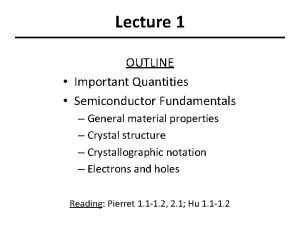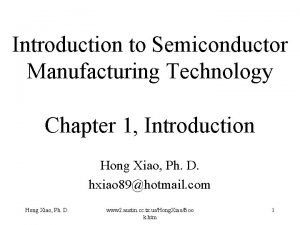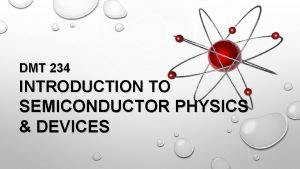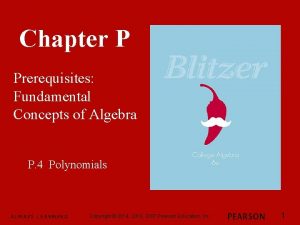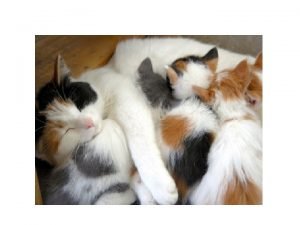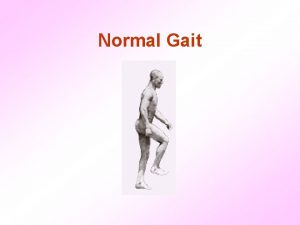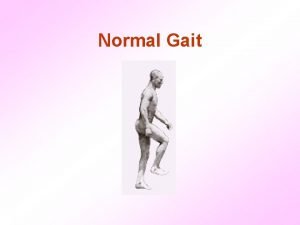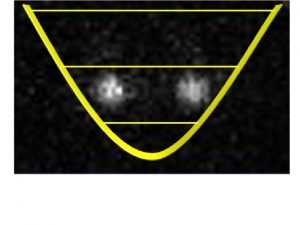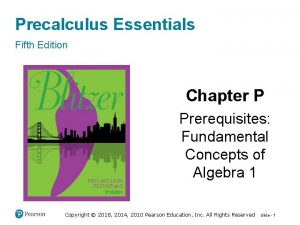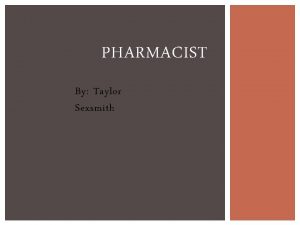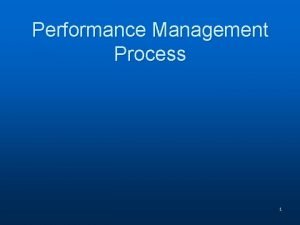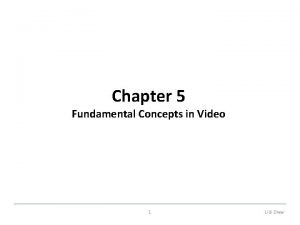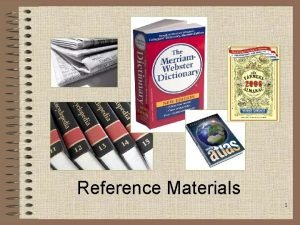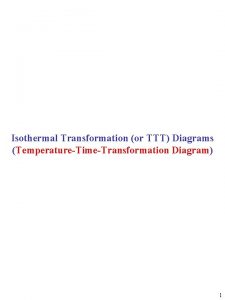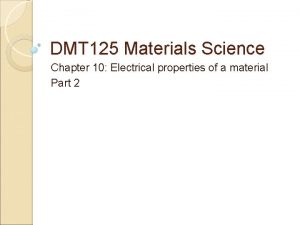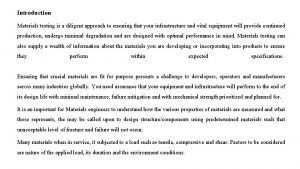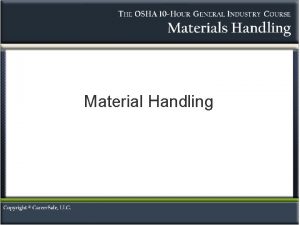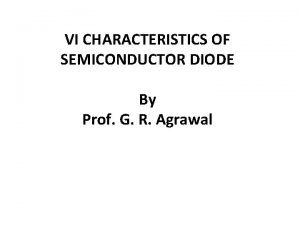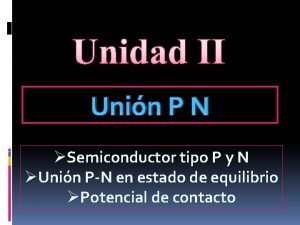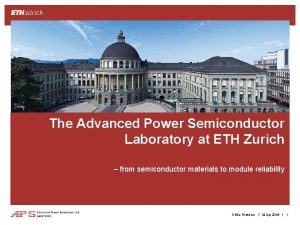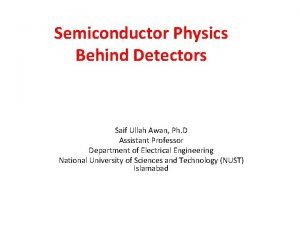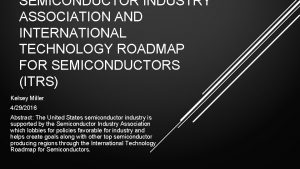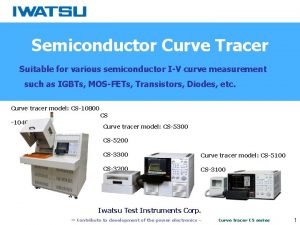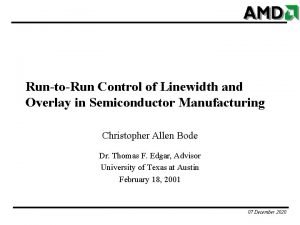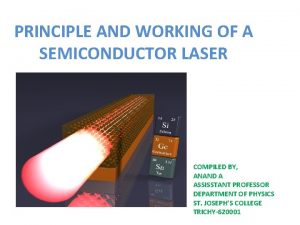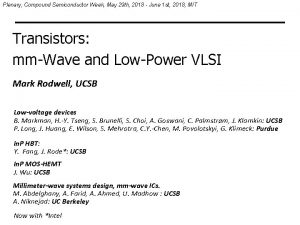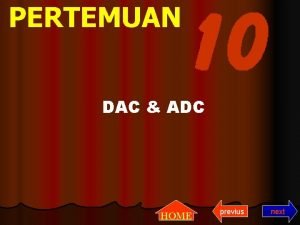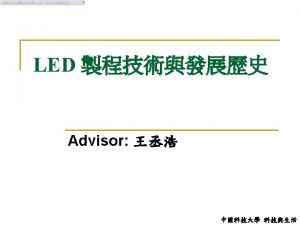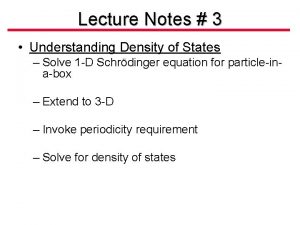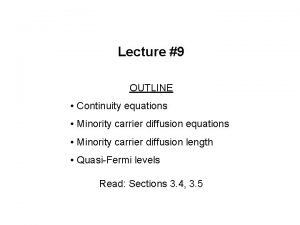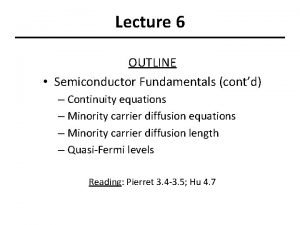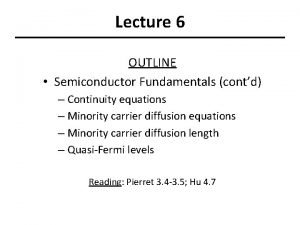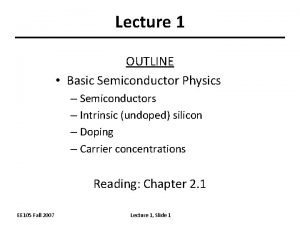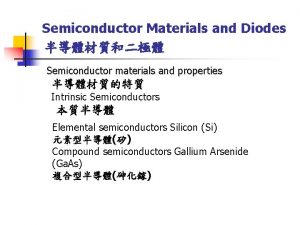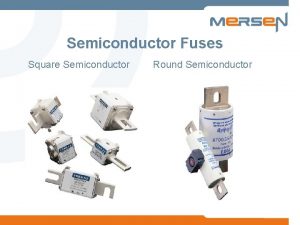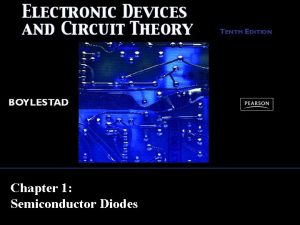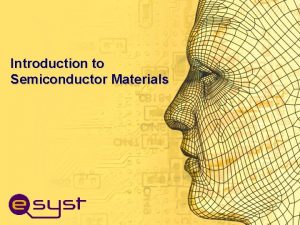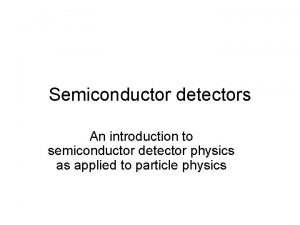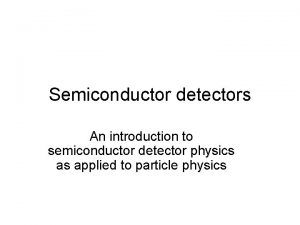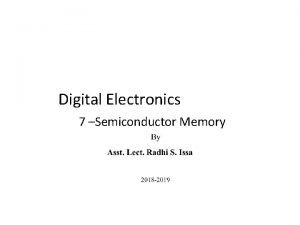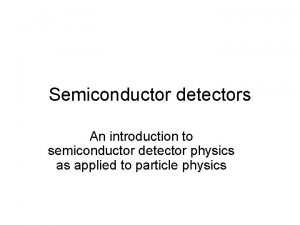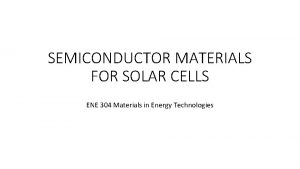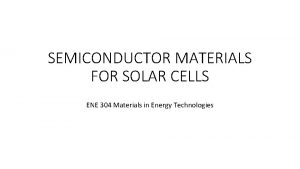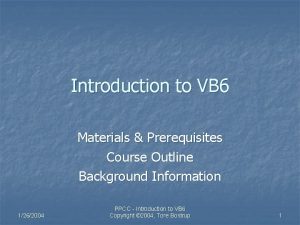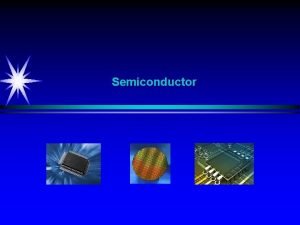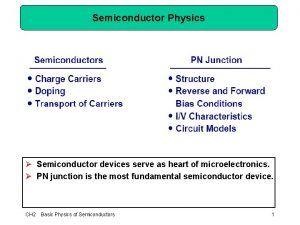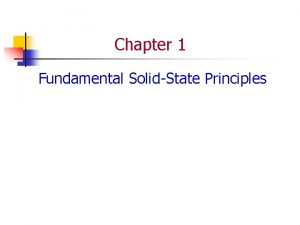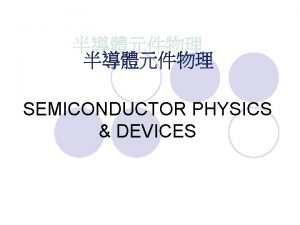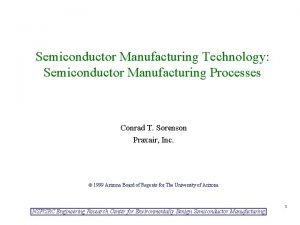Introduction to Semiconductor Materials Prerequisites To understand this




































































- Slides: 68

Introduction to Semiconductor Materials

Prerequisites • To understand this presentation, you should have the following prior knowledge: – Draw the structure of an atom, including electrons, protons, and neutrons. – Define resistance and conductance. – Label an electronic schematic, indicating current flow. – Define Ohm’s and Kirchhoff’s laws. – Describe the characteristics of DC and AC (sine wave) voltages.

Student Learning Outcomes • Upon completion of viewing this presentation, you should be able to: – Define conductor, insulator and semiconductor, and state the resistance or conductance of each. – Name at least three semiconductor materials and state the most widely used. – Name the basic structure of material and explain how it is formed with atoms. – Define doping and name the two types of semiconductor material formed with doping. – Name the current carriers in N and P-type material. – Explain how current flows in semiconductor material.

Electronic Materials • • The goal of electronic materials is to generate and control the flow of an electrical current. Electronic materials include: 1. Conductors: have low resistance which allows electrical current flow 2. Insulators: have high resistance which suppresses electrical current flow 3. Semiconductors: can allow or suppress electrical current flow

Conductors • Good conductors have low resistance so electrons flow through them with ease. • Best element conductors include: – Copper, silver, gold, aluminum, & nickel • Alloys are also good conductors: – Brass & steel • Good conductors can also be liquid: – Salt water

Conductor Atomic Structure • The atomic structure of good conductors usually includes only one electron in their outer shell. – It is called a valence electron. – It is easily striped from the atom, producing current flow. Copper Atom

Insulators • Insulators have a high resistance so current does not flow in them. • Good insulators include: – Glass, ceramic, plastics, & wood • Most insulators are compounds of several elements. • The atoms are tightly bound to one another so electrons are difficult to strip away for current flow.

Semiconductors • Semiconductors are materials that essentially can be conditioned to act as good conductors, or good insulators, or any thing in between. • Common elements such as carbon, silicon, and germanium are semiconductors. • Silicon is the best and most widely used semiconductor.

Semiconductor Valence Orbit • The main characteristic of a semiconductor element is that it has four electrons in its outer or valence orbit.

Crystal Lattice Structure • The unique capability of semiconductor atoms is their ability to link together to form a physical structure called a crystal lattice. • The atoms link together with one another sharing their outer electrons. • These links are called covalent bonds. 2 D Crystal Lattice Structure

Semiconductors can be Insulators • If the material is pure semiconductor material like silicon, the crystal lattice structure forms an excellent insulator since all the atoms are bound to one another and are not free for current flow. • Good insulating semiconductor material is referred to as intrinsic. • Since the outer valence electrons of each atom are tightly bound together with one another, the electrons are difficult to dislodge for current flow. • Silicon in this form is a great insulator. • Semiconductor material is often used as an insulator.

Doping • To make the semiconductor conduct electricity, other atoms called impurities must be added. • “Impurities” are different elements. • This process is called doping.

Semiconductors can be Conductors • An impurity, or element like arsenic, has 5 valence electrons. • Adding arsenic (doping) will allow four of the arsenic valence electrons to bond with the neighboring silicon atoms. • The one electron left over for each arsenic atom becomes available to conduct current flow.

Resistance Effects of Doping • If you use lots of arsenic atoms for doping, there will be lots of extra electrons so the resistance of the material will be low and current will flow freely. • If you use only a few boron atoms, there will be fewer free electrons so the resistance will be high and less current will flow. • By controlling the doping amount, virtually any resistance can be achieved.

Another Way to Dope • You can also dope a semiconductor material with an atom such as boron that has only 3 valence electrons. • The 3 electrons in the outer orbit do form covalent bonds with its neighboring semiconductor atoms as before. But one electron is missing from the bond. • This place where a fourth electron should be is referred to as a hole. • The hole assumes a positive charge so it can attract electrons from some other source. • Holes become a type of current carrier like the electron to support current flow.

Types of Semiconductor Materials • The silicon doped with extra electrons is called an “N type” semiconductor. – “N” is for negative, which is the charge of an electron. • Silicon doped with material missing electrons that produce locations called holes is called “P type” semiconductor. – “P” is for positive, which is the charge of a hole.

Current Flow in N-type Semiconductors • The DC voltage source has a positive terminal that attracts the free electrons in the semiconductor and pulls them away from their atoms leaving the atoms charged positively. • Electrons from the negative terminal of the supply enter the semiconductor material and are attracted by the positive charge of the atoms missing one of their electrons. • Current (electrons) flows from the positive terminal to the negative terminal.

Current Flow in P-type Semiconductors • Electrons from the negative supply terminal are attracted to the positive holes and fill them. • The positive terminal of the supply pulls the electrons from the holes leaving the holes to attract more electrons. • Current (electrons) flows from the negative terminal to the positive terminal. • Inside the semiconductor current flow is actually by the movement of the holes from positive to negative.

Diode Circuits

Voltage Regulation Rectifier Circuit

Half-Wave Rectifier Tin Cause of ripple: the capacitor is discharged for almost an entire period.

inversion Ripple Reduction: Do not allow the capacitor to discharge so frequently

An Inverting Half-Wave Rectifier If Vin >0, D 1 and D 2 are off. If Vin <0, D 1 and D 2 are on and Vout>0.

An Non-Inverting Half-Wave Rectifier If Vin >0, D 1 and D 2 are on, Vout>0. If Vin <0, D 1 and D 2 are off.

Full-Wave Rectifier Inverting Non-Inverting

Full-Wave Rectifier Alternative Drawing Inverting Full-Wave A. K. A. Bridge Rectifier Non-Inverting

Using Constant Voltage Diode Model Vout=-Vin-2 VD, on Vout=Vin-2 VD, on

Input versus Output |Vin|<2 VD, on

Addition of the Smoothing Capacitor

Modification of Ripple Estimation Formula Modification: 1. Turn-on voltage 2. 1/2 to account for inversion of negative peaks.

Maximum Reverse Voltage VB=VD, on VA=VP Vp is the amplitude of Vin VAB=VP-VD, on Maximum reverse voltage is approximately Vp

Compare Maximum Reverse Bias Voltage to Half -Wave Rectifier A reverse diode voltage must sustain larger reverse bias voltage

Currents as a function of time

Application of Bridge Rectifier

Summary

Application of Limiting Circuits Limit the signal amplitude at a suitable point in the receiver

Characteristic of a Limiting Circuit

A Simple Limiter

General Limiter Circuit

Application of Voltage Doubler Electronic systems typically provide a global supply voltage: 3 V Design of some circuits will be simplified if they from a higher supply voltage.

Voltage Doubler Floating Capacitor Divider

Capacitor Diode Circuit Ideal diode. Vout pinned to 0 V Positive charges begin to leave the left Plate of C 1, turning D 1 off. C 1 is now a floating capacitor

Generating 0 to 2 Vp Waveform

Peak Detector

Voltage Doubler 0 to 2 Vp waveform Peak Detector

Diode as a Voltage Shifter Application: We may need to shift the average level of a signal up and down because the subsequent stage (e. g. an amplifier) may not operate properly with the present dc level.

A Simple Level Shift

Shift up the DC by 2 VD, On

A simple electronic switch CK is 1: I 1=1, diodes are shorted, and Vin=Vout. CK is 0, diodes are off, charges are stored across C 1.


Rectifiers

introduction ù A rectifier is an electrical device that converts alternating current (AC), which periodically reverses direction, to direct current (DC), which is in only one direction, a process known as rectification.

Types of Rectifiers Half wave Rectifier Full wave Rectifier Bridge Rectifier

Half wave rectifier ù In half wave rectification, either the positive or negative half of the AC wave is passed, while the other half is blocked. ù Because only one half of the input waveform reaches the output, it is very inefficient if used for power transfer.

Half wave rectifier working animation

Half wave rectification

Output dc voltage calculation ù The output DC voltage of a half wave rectifier can be calculated with the following two ideal equations

full wave rectifier ù A full-wave rectifier converts the whole of the input waveform to one of constant polarity (positive or negative) at its output. ù Full-wave rectification converts both polarities of the input waveform to DC (direct current), and is more efficient. 0

Full wave rectifier working animation

Full wave rectification ù In a circuit with a non - center tapped transformer, four diodes are required instead of the one needed for halfwave rectification. ù For single-phase AC, if the transformer is center-tapped, then two diodes back-to-back (i. e. anodes-to-anode or cathode-to-cathode) can form a full-wave rectifier.

Full wave rectifier using 4 diodes

Full wave rectifier using transformer and 2 diodes

formula ù The average and root-mean-square output voltages of an ideal single phase full wave rectifier can be calculated as:

Output voltage of the full wave rectifier Animation

Bridge rectifier ù A bridge rectifier makes use of four diodes in a bridge arrangement to achieve full-wave rectification.

Bridge rectifier circuit

Bridge rectifier working animation

 To understand recursion you must understand recursion
To understand recursion you must understand recursion Jan vardaman
Jan vardaman Semiconductor materials
Semiconductor materials Hong xiao semiconductor
Hong xiao semiconductor Device physics
Device physics Go noodle cant stop the feeling
Go noodle cant stop the feeling Example of harmful materials and harmful materials
Example of harmful materials and harmful materials Natural man made
Natural man made Differentiate adopting materials and adapting materials
Differentiate adopting materials and adapting materials Direct materials budget with multiple materials
Direct materials budget with multiple materials Introduction about recruitment and selection
Introduction about recruitment and selection Lone star college nursing program curriculum
Lone star college nursing program curriculum Group discussion meaning
Group discussion meaning Gcc csu breadth
Gcc csu breadth Nursing program glendale
Nursing program glendale Chapter p prerequisites
Chapter p prerequisites Scalp mnemonic
Scalp mnemonic Amedd enlisted commissioning program
Amedd enlisted commissioning program Prerequisites of gait
Prerequisites of gait Medical term for normal gait
Medical term for normal gait Glendale community college nursing prerequisites
Glendale community college nursing prerequisites Stages of gait development
Stages of gait development P+p+p+p algebra
P+p+p+p algebra Chapter p prerequisites fundamental concepts of algebra
Chapter p prerequisites fundamental concepts of algebra Communications merit badge
Communications merit badge Prerequisites for ssdt
Prerequisites for ssdt Image processing prerequisites
Image processing prerequisites Prerequisites for quantum computing
Prerequisites for quantum computing Chapter p prerequisites
Chapter p prerequisites Waterloo pharmacy prerequisites
Waterloo pharmacy prerequisites Prerequisite of performance management
Prerequisite of performance management Ap spanish prerequisites
Ap spanish prerequisites Ucla masters entry nursing
Ucla masters entry nursing Health education topics for primary school students
Health education topics for primary school students Examples of prerequisite programmes
Examples of prerequisite programmes Rcc nursing point system
Rcc nursing point system Uw pharmacy prerequisites
Uw pharmacy prerequisites Pcnse requirements
Pcnse requirements What are the 5 r's in note-taking?
What are the 5 r's in note-taking? Fundamental concepts in video
Fundamental concepts in video What is reference materials
What is reference materials Crown lengthening procedure steps ppt
Crown lengthening procedure steps ppt Introduction to materials science for engineers chapter 10
Introduction to materials science for engineers chapter 10 Define materials handling
Define materials handling Introduction to dental materials
Introduction to dental materials Introduction to materials science for engineers chapter 10
Introduction to materials science for engineers chapter 10 Introduction to materials testing
Introduction to materials testing Material handling introduction
Material handling introduction Difference between pn junction diode and zener diode
Difference between pn junction diode and zener diode Semiconductor ram memories
Semiconductor ram memories Semiconductor tipo p
Semiconductor tipo p Power semiconductor devices
Power semiconductor devices What is a semiconductor used for
What is a semiconductor used for Disadvantages of semiconductor detector
Disadvantages of semiconductor detector International technology roadmap for semiconductors
International technology roadmap for semiconductors Semiconductor curve tracer
Semiconductor curve tracer Runtomrun
Runtomrun Semiconductor laser principle
Semiconductor laser principle Drift current and diffusion current
Drift current and diffusion current Future of semiconductor industry in malaysia
Future of semiconductor industry in malaysia Compound semiconductor week
Compound semiconductor week Cara kerja dac
Cara kerja dac Compound semiconductor magazine
Compound semiconductor magazine Intrinsic carrier concentration
Intrinsic carrier concentration Continuity equation semiconductor
Continuity equation semiconductor Continuity equation derivation in semiconductors
Continuity equation derivation in semiconductors Equation of continuity in electromagnetism
Equation of continuity in electromagnetism Drift current and diffusion current in semiconductor
Drift current and diffusion current in semiconductor Basic semiconductor physics:
Basic semiconductor physics:


